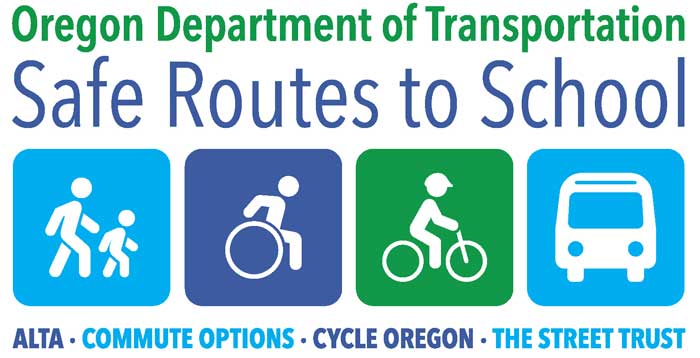Why develop a walking school bus?
Studies show that fewer children are walking and biking to school, and more children are at risk of becoming overweight. Changing behaviors of children and parents require creative solutions that are safe and fun.
Implementing a walking school bus can be both.
What is a walking school bus?
A walking school bus is a group of children walking to school with one or more adults. If that sounds simple, it is, and that’s part of the beauty of the walking school bus. It can be as informal as two families taking turns walking their children to school to as structured as a route with meeting points, a timetable and a regularly rotated schedule of trained volunteers.
A variation on the walking school bus is the bicycle train, in which adults supervise children riding their bikes to school. The flexibility of the walking school bus makes it appealing to communities of all sizes with varying needs.
Starting simple
When beginning a walking school bus, remember that the program can always grow. It often makes sense to start with a small bus and see how it works. Pick a single neighborhood that has a group of parents and children who are interested. It’s like a carpool—without the car—with the added benefits of exercise and visits with friends and neighbors. For an informal bus:
- Invite families who live nearby to walk.
- Pick a route and take a test walk.
- Decide how often the group will walk together.
- Have fun!
When picking a route, answer these four questions:
- Do you have room to walk?
Are there sidewalks and paths?
Is there too much traffic? - Is it easy to cross the street?
- Do drivers behave well?
Do they yield to walkers?
Do they speed? - Does the environment feel safe?
Are there loose dogs?
Is there criminal activity?
For more help identifying walkable routes, use the Walkability Checklist.
Reaching more children
Success with a simple walking school bus or a desire to be more inclusive may inspire a community to build a more structured program. This may include more routes, more days of walking and more children. Such programs require coordination, volunteers and potential attention to other issues, such as safety training and liability. The school principal and administration, law enforcement and other community leaders will likely be involved.
First, determine the amount of interest in a walking school bus program. Contact potential participants and partners:
- Parents and children
- Principal and school officials
- Law enforcement officers
- Other community leaders
Second, identify the route(s).
- The amount of interest will determine the number of walking routes.
- Walk the route(s) without children first.
Third, identify a sufficient number of adults to supervise walkers.
The Centers for Disease Control and Prevention recommend one adult for every six children. If children are age 10 or older, fewer adults may be needed. If children are ages 4 to 6, one adult per three children is recommended.
Next, finalize the logistical details.
- Who will participate?
- How often will the walking school bus operate? Will the bus operate once a week or every day?
- When do children meet the bus? It’s important to allow enough time for the slower pace of children, but also to ensure that everyone arrives at school on time.
- Where will the bus meet children—at each child’s home or at a few meeting spots?
- Will the bus operate after school?
- What training do volunteers need?
- What safety training do children need? Visit Resources.
Finally, kick-off the program.
A good time to begin is on International Walk to School Day. Walk and look for ways to encourage more children and families to be involved. Have fun!
Thanks to the National Center for Safe Routes to School of the University of North Carolina Highway Safety Research Center. Funding provided by the U.S. Department of Transportation.

